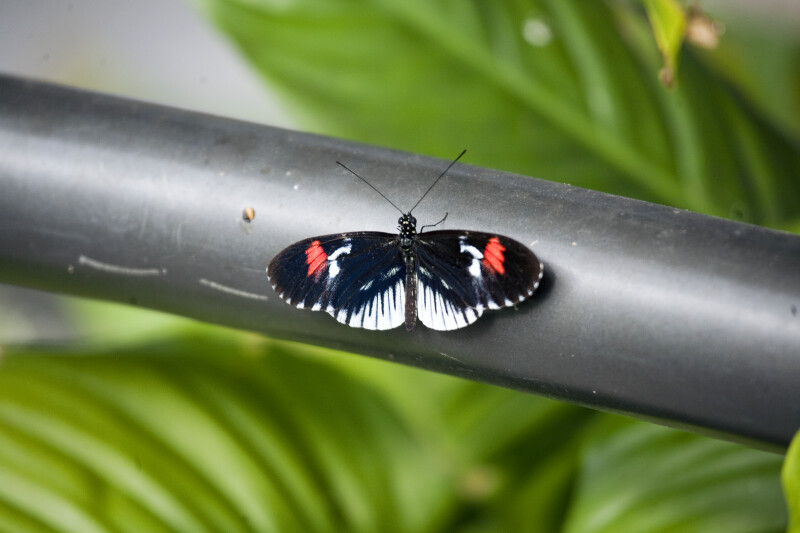 |
| Photo via ImageKind |
A secret joy of mine is to play the piano late at night when no one is at home. I especially love to do so in the summer, with the windows open. I sweat and drip all over the keys and as soon as I hear a car pull into the driveway the private concert is over. I stumbled across the Piano Key Butterfly the other day and now I will think of them every time I'm pounding away on my old William Knabe.
The Piano Key butterfly is on of the Heliconiie butterflies, or longwings, and are found mostly in the neotropics of South and Central America. The Piano Key is more commonly called the Postman butterfly, know in taxonomy terms as Heliconius melpomene. Melpomene, daughter of Zeus and Mnemosyne, was originally the Greek Muse of Singing but later became the Muse of Tragedy.
Heliconius melpomene are widespread throughout their range, feeding primarily on the passionflower vine. Doesn't that sound exotic? "I'm the Muse of Tragedy. I live on passionflower."
 |
| Image via Heidi Claire |
The Postman is long-lived and easily managed in captivity. It has become a favorite with butterfly conservatories such as Butterfly World, The Butterfly Zoo , and The Niagara Parks Butterfly Conservatory. As more people have seen the Postman butterfly and noted that some have the striking white and black markings along the hindwing, they have been increasingly referred to as the Piano Key Butterfly. There is a huge variety in the markings of our longwing friend, partly because they are so closely related to the Heliconius erato, sometimes even crossbreeding.
It can all be very confusing if you start to explore genus, species, sub-species..... but you will surely not confuse the Piano Key Butterfly with a Butterfly Grand Piano.
 |
| Image via Piano World |
The Butterfly Grand Piano was manufactured by Wurlitzer in the 1930's and 1940's. It was generally less the four feet deep and was intended to attract piano players living in smaller apartments. The lid was hinged down the middle as opposed to the side, hence it's name. These were limited production pianos and very few remain available. I've seen then going for $500 to $35,000. The smaller student versions had only 44 keys while the "full-size" butterfly had 73 keys. A full keyboard is 88 keys. Wurlitzer did make an electric version for a short time.
 |
| Image via Well-Tempered Forum |
Anyway, I've strayed as usual but that's our butterfly friend for today.
Have a grand day!



No comments:
Post a Comment